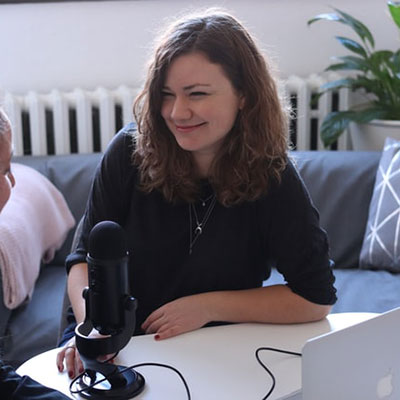Oh, you know that feeling when you first cradle a tiny newborn in your arms, tears of joy so absurdly sweet they taste like lullabies? Entering the world with its first yawns and wrinkled forehead, a baby girl brings a cosmos of hope, dreams, and tomorrow’s lullabies.
It’s not just “oh congrats”—it’s a heart-squeeze of emotions. I remember when my dear friend introduced me to her newborn daughter, I found myself whispering things I never thought I’d utter—like “you’re already rewriting the stars, little one.” That moment felt so universal yet so personal.
The arrival of a baby girl is like the sunrise of humanity’s future—each giggle a gentle reminder that kindness still exists. In welcoming such joy, words matter, gestures linger.
So here we dive into 60+ ways to say thank you in Korean (and actually mean it), for every nuance—from formal bows to casual hugs, from poetic vibes to humorous giggles.
Section 1: Formal and Respectful Gratitude
The first category is all about thank you in Korean that sounds respectful and polished—great for elders, colleagues, serious moments, or those who taught you the best diapers techniques. Sprinkle a little depth, add a heartfelt bow. Here are 10 elegant ways:
- 감사합니다 (gamsahamnida) – polished, standard, always works.
- 고맙습니다 (gomapseumnida) – slightly softer, but still proper.
- 대단히 감사합니다 (daedanhi gamsahamnida) – like adding fireworks: “thank you very much.”
- 매우 감사합니다 (maeu gamsahamnida) – milder but genuine.
- 깊이 감사드립니다 (gipi gamsadeurimnida) – “I deeply thank you.”
- 진심으로 감사드립니다 (jinsimeuro gamsadeurimnida) – “sincerely, from the heart.”
- 수고하셨습니다 (sugohasyeosseumnida) – for “you worked so hard”—perfect for the doctor, nurse, or tired aunt.
- 노고에 감사드립니다 (nogoe gamsadeurimnida) – “I appreciate your effort/ hardships.”
- 귀한 말씀 감사합니다 (gwihan malsum gamsahamnida) – “thank you for your valuable words.”
- 언제나 감사드립니다 (eonjena gamsadeurimnida) – timeless, “I’m always grateful.”
You’d use these when you’re bowing to the grandparents who came from across the country, or texting your boss late-night updates, or praising the midwife who stayed past midnight. There’s something both humble and majestic about saying thank you korean this way—like you’re placing gratitude on a velvet cushion.
Section 2: Casual & Heartfelt Thanks
Here’s for the pals and fam who don’t need ceremony, just warmth. Drop the formality, let the love in:
- 고마워 (gomawo) – sweet, simple, heart-tugging.
- 고마워요 (gomawoyo) – polite-casual, not stuffy.
- 감사 (gamsa) – clipped, cheeky shorthand.
- 수고했어 (sugohaesseo) – “you did great, thanks for the grind.”
- 잘했어 (jalhaesseo) – “you nailed it—thanks!”
- 도와줘서 고마워 (dowajwoseo gomawo) – “thanks for stepping in.”
- 배려해줘서 고마워 (baeryehaejwoseo gomawo) – “your thoughtfulness means a lot.”
- 신경써줘서 고마워 (singyeong-sseojwoseo gomawo) – “thanks for caring so much.”
- 힘이 돼줘서 고마워 (himi dwaejwoseo gomawo) – “you were my strength—thx!”
- 고마워. 정말 / 너무 고마워 / 고마워. 사랑해 – from grateful to full-on “I love you, thanks.”
Picture this: your sister stayed up rocking the baby while you sprinted to the pharmacy at 2 a.m. You collapse on the couch and gasp 고마워, and she grins—no need for anything grander. That’s the real-life appeal right there.
Section 3: Deep & Emotion-Infused Expressions

Sometimes, a regular thank you just doesn’t cut it. You want depth—words that swim in your soul. These are poetic, heavy, layered:
- 정말 감사합니다 (jeongmal gamsahamnida) – “I truly thank you.”
- 감사한 마음입니다 (gamsahan maeumimnida) – “my heart is grateful.”
- 신세를 지고 있습니다 (sinsereul jigo isseumnida) – “I owe you big time.”
- 덕분에 (deokbune) – “thanks to you, this happened.”
- 많이 감사합니다 (mani gamsahamnida) – “I’m very grateful.”
- 감사드립니다 (gamsadeurimnida) – another formal gem.
- 고맙게 생각합니다 (gomapge saenggakhamnida) – “I think of it gratefully.”
- 감사한 마음으로 (gamsahan maeumeuro) – “with a thankful heart.”
- 너 덕분에 (neo deokbune) – “because of you, I made it.”
- 진심으로 감사해요 (jinsimeuro gamsahaeyo) – pulling the sincerity card.
I once heard a Korean grandma say after being babysat by her curious grandson who’d made a fortress of diapers: > “덕분에 내 하루가 깨끗해졌어.” Literally “thanks to you, my day got clean,” and I swear it made half a tear form.
Section 4: Contextual & Event-Based Thank Yous
Here we go—thank yous built for the deed:
- 도와줘서 고마워 (dowajwoseo gomawo) – for jumping in.
- 배려에 감사드립니다 (baeryeo-e gamsadeurimnida) – for being considerate.
- 지원에 감사드립니다 (jiwon-e gamsadeurimnida) – for support.
- 협조에 감사드립니다 (hyeobjo-e gamsadeurimnida) – for cooperation.
- 도와 주셔서 감사합니다 (dowa jusyeoseo gamsahamnida) – formal for “thanks for helping me.”
- 맛있게 잘 먹었습니다 (masitge jal meogeosseumnida) – “thank you, that was delicious.”
- 재밌게 잘 놀았어요 (jaemikke jal norasseoyo) – “that was fun, thank you.”
- 잘 쓰겠습니다 (jal sseugesseumnida) – “I’ll make good use of this, thank you.”
- 잘 받았습니다 (jal badatseumnida) – “I received it well, thanks.”
- 잘 먹었습니다 (jal meogeotseumnida) – specifically for food—“thanks for the meal.”
I remember gifting fresh homemade cookies to a neighbor—they replied with 잘 먹었습니다 and then casually offered coffee next time. That’s the language of real connection.
Read This Blog: https://cozygreets.com/happy-anniversary-daughter-and-son-in-law-wishes/
Section 5: Informal & Playful Gratitude
Add some wink, some play:
- 맛있어/재밌어 (masheesseo/jaemiteo) – “that was yum/fun!”
- 고마운 줄 알아 (gomaun jul ara) – “know that I’m grateful!”
- 너 아니었으면 어쩔 뻔했어 (neo anieosseumyeon eojjeol pponeosseo) – “I’d be toast without you!”
- 내가 뭘 해줄까? 고마워 (naega mweol hae julkka? gomawo) – “you need something? thanks!”
- 덕분에요 (deokbuneyo) – cute short “thanks to you.”
- 정말 고맙습니다 (jeongmal gomapseumnida) – blends formal and real.
- 고마워. 잊지 않을게 (gomawo. ijji aneulge) – “thanks—can’t forget this.”
- 진짜 고마워 (jinjja gomawo) – adds emphasis, “>whatever, you’re amazing<.”
A chatty cousin once texted me at 3 a.m. with a waiting-room update: “got buzzed into ICU lol.” I replied “고마워. 잊지 않을게.” She later said it was the only time she felt truly seen, not just another “hope all’s well” message.
Section 6: “thank you very much” in Korean—Amplified Emotion

Time for some serious emotional inflation—perfect when words must rockets:
- 대단히 감사합니다 (daedanhi gamsahamnida)
- 매우 감사합니다 (maeu gamsahamnida)
- 진심으로 감사드립니다 (jinsimeuro gamsadeurimnida)
- 깊이 감사드립니다 (gipi gamsadeurimnida)
- 정말 감사합니다 (jeongmal gamsahamnida)
- 많이 감사합니다 (mani gamsahamnida)
- 대단히 고맙습니다 (daedanhi gomapseumnida)
- 정말 고맙습니다 (jeongmal gomapseumnida)
- 너무 고마워요 (neomu gomawoyo)
- 너무 감사합니다 (neomu gamsahamnida)
Playful exploration: you gift a friend a handcrafted blanket for newborn. She unwraps it in tears. You always thought it’d be “cute.” They respond 깊이 감사드립니다. Boom—you realize your tiny stitches held love deeper than any words you had.
Cultural Notes & Anecdotes
Here’s where I sprinkle real-life flavor:
“In Jeju, it’s a thing to bake small tangerine cakes and say 감사합니다 when neighbors bring them over.”
In Busan, fishermen will say 노고에 감사드립니다 to the folks who help unload the morning catch, even if it’s just to hold the net. It’s respect baked into language. Such moments remind me how different ways to say thank you in korean are often tied to humility, gratitude that acknowledges not just help—but the person behind it.
Quick Mini Categories
Because sometimes you need thematic shortcuts:
Gratitude for Effort & Labor
- 수고하셨습니다
- 노고에 감사드립니다
- 정말 고생 많으셨어요 (you went through so much, thanks)
- 고생하셨어요
Gratitude for Kindness
- 배려해줘서 고마워요
- 따뜻한 말씀 감사합니다
- 귀한 말씀 감사합니다
Gratitude for Gift or Meal
- 잘 쓰겠습니다
- 잘 받았습니다
- 잘 먹었습니다
Gratitude for Emotional Support
- 힘이 돼줘서 고마워요
- 네 덕분에 힘냈어 (I got courage because of you)
- 덕분에 버틸 수 있었어
How to Write a Custom Message

- Start with context: mention what they did (“thank you for…“).
- Choose your style: formal? casual? poetic?
- Pick a phrase: match tone + your closeness.
- Add a personal touch: a short line—something only you two share.
- Seal it with gratitude + an emoji or punctuation to feel genuine.
For example:
“도와줘서 고마워요 – 네 덕분에 어제 진짜 웃었어 :)”
(Honest, warm, and brings your shared moment back.)
Or, for formal:
“깊이 감사드립니다. XXX 님의 귀한 조언 덕분에 큰 결정에 큰 도움 얻었습니다.”
Creative Ways to Deliver Your Wishes
You can:
- Write it on a seed-paper card—plant it later.
- Record a short voice note pronouncing 고마워 in your best accent.
- Bake tiny cookies and jot 고마워요 on each.
- Send a Polaroid with the baby + “정말 고맙습니다” at bottom.
- Use neon sticky notes around their fridge: each says a different version of thank you korean.
The act becomes the gratitude.
Frequently asked Questions
hank you in korean
The most polite and universal way to say it is 감사합니다 (gamsahamnida), suitable for any formal or respectful context
ways to say thank you in korean
You can vary formality: 고맙습니다 (gomapseumnida) is polite-formal, while 고마워요 (gomawoyo) is polite-casual
different ways to say thank you in korean
To express sincerity, use 정말 고마워요 (jeongmal gomawoyo) or go casual with 고마워 (gomawo) among friends
thank you korean
A simple casual shorthand, often text-slang, is 감사 (gamsa) or abbreviated as ㄱㅅ in chat
thank you very much” in korean
For extra emphasis, say 대단히 감사합니다 (daedanhi gamsahamnida) or 너무 감사합니다 (neomu gamsahamnida) to mean “thank you very much”
Conclusion
So there you have 60+ ways to say thank you in Korean, each one suited to relationships, context, or emotion—formal or playful, poetic or pragmatic. From 감사합니다 to 너 아니었으면 어쩔 뻔했어, these expressions are relational bridges—built with truth, humility, respect, and love.
Let’s remember: gratitude isn’t perfunctory—it’s connective. It knits us into the lives around us, especially in moments as tender as welcoming a new baby girl (or baby anything!). So pick a phrase, tweak it, own it. Let it float out with warmth.
What’s your fave version? Wrote one to someone today? Maybe you’ve used 진심으로 감사드립니다 in a moment that felt moonlit? I’d love to read your stories or shortest thank you notes—drop it in the comments!
Final note: gratitude is a sunrise—say it often, say it real. And like a baby’s laugh in the morning, it reminds us how luminous life truly is. 🌸
